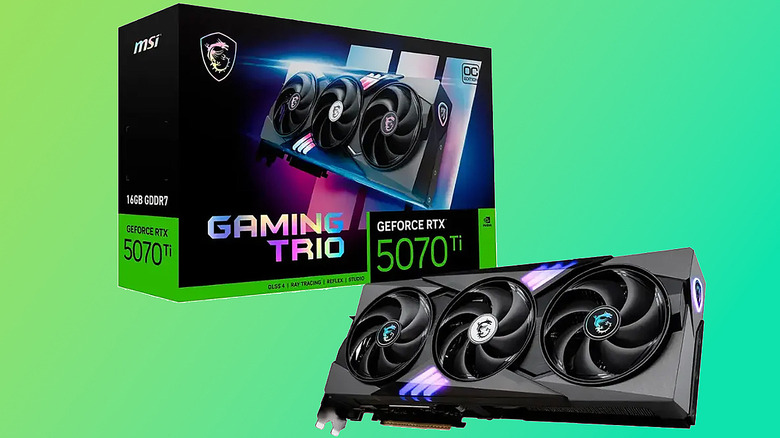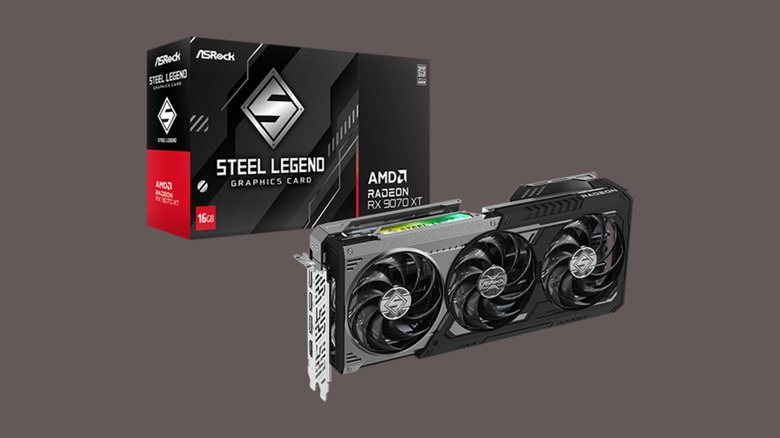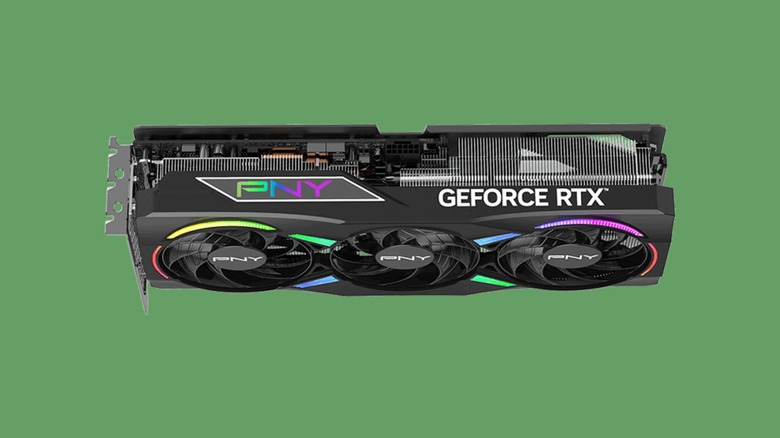NVIDIA GeForce RTX 5070 Ti Vs. AMD Radeon RX 9070 XT: How Do They Compare?
We may receive a commission on purchases made from links.
If you're looking to build a gaming PC or refresh your existing build, you can't go wrong with either the Nvidia GeForce RTX 5070 Ti or the AMD Radeon RX 9070 XT. Both of these are some of the best graphics cards you can currently buy, and they offer plenty of performance for gaming or content creation. I'm a PC hardware journalist with over a decade of experience in the industry, so based on my own experience and reviewer insights, I'll guide you and help you choose the right GPU for your needs.
Choosing between AMD and Nvidia is always tricky, so if you're unsure, I fully understand. The choice is made even more difficult this time around, as the GPU market is a pretty tumultuous place right now. Prices and availability fluctuate on a daily basis; setting your sights on one GPU might mean that you'll have to wait for a long time for it to be in stock. Opening up your horizons to both AMD and Nvidia might be helpful here, but you can't expect the exact same performance out of each card, which could potentially be a problem.
Apart from their architectural differences, the RTX 5070 Ti and the RX 9070 XT also vary based on their exclusive software. Nvidia's GPU opens the door to DLSS 4, which can generate up to four times the frame rates, boosting your fps drastically. Meanwhile, AMD's signature FSR 4 leverages machine learning to upscale your games and boost frame rates. Let's dive into each card to help you make an informed decision.
RTX 5070 Ti vs. RX 9070 XT: Specs & Performance
Comparing AMD vs. Nvidia in terms of specifications is often tricky, and in many ways, it doesn't make much sense. The GPUs are entirely different on an architectural level, and thus, there's no apples-to-apples comparison for some of the specs. However, we can go over the things they do have in common to see how they stack up.
The Nvidia GeForce RTX 5070 Ti and the AMD Radeon RX 9070 XT share a similar memory setup, with both sporting 16 GB of VRAM (video memory) and a 256-bit interface. This is good news, as VRAM is important in gaming and content creation these days. However, it's important to remember that AMD's GPU has a much slower, older memory type — GDDR6 vs. GDDR7 — which will affect performance. This is especially important at higher resolutions.
In terms of performance, reviewers agree that the RTX 5070 Ti does a better job of handling ray tracing. With that out of the way, let's compare frame rates. Tom's Hardware reviewed the RX 9070 XT, and in pure rasterization (meaning no ray tracing and no upscaling), the card averaged 60 fps at 4K; the RTX 5070 Ti led slightly, averaging 61 fps. At 1440p, those numbers look better, but the lead remains similar: The RTX 5070 Ti scores 100 fps, and the RX 9070 XT follows with 97.5 fps. The cards are similar on paper, but RTX 5070 Ti may have a bit of a lead due to multi-frame generation and better ray tracing capabilities.
RTX 5070 Ti vs. RX 9070 XT: Price & availability
Right out of the gate, I'll tell you that the RTX 5070 Ti is pricier than the RX 9070 XT. The Nvidia graphics card launched with a MSRP (recommended list price) of $749; meanwhile, AMD's RX 9070 XT starts at $599. This means that, as long as you don't care about ray tracing or the access to 4x frame generation (which Nvidia provides through DLSS 4), the RX 9070 XT can be seen as better value — it saves you $150. However, the reality of the GPU market is pretty bleak, so at the time of writing, you might not be able to score either card at MSRP.
The cheapest RTX 5070 Ti I was able to find on Amazon is this MSI Gaming RTX 5070 Ti Ventus 3X OC model, priced at $909. That's $150 over MSRP. Meanwhile, the RX 9070 XT sells for anywhere between $800 and $1,000 right now, with the cheapest model being the PowerColor Reaper AMD Radeon RX 9070 XT, now priced at $799.
This kind of pricing and availability kind of flips the whole argument on its head. With the cards overpriced and just a bit over $100 apart, both miss out on some of the "value for the money" aspect. While the RX 9070 XT can be considered a clear choice when both cards at MSRP, Nvidia might be a smarter decision if you care about ray tracing and future-proofing with Nvidia's DLSS 4. AMD's FSR 4 has its merits, but way fewer games support it.
If you can score it at MSRP when you read this, the RX 9070 XT provides great value. Otherwise, consider how much you care about ray tracing and DLSS 4 and make your choice based on that.
Methodology
This comparison between the RTX 5070 Ti and the RX 9070 XT was written based on my own experience in the graphics card market, as well as based on reviews from reputable sources. I'm a PC builder with nearly 20 years of building experience, and the GPU market is my particular area of interest. I've been covering major GPU launches for years, and writing about PC hardware for over a decade. This experience gives me a lot of insight into the GPU market, the value of the money aspect of every graphics card, and performance relative to other GPUs of a similar caliber. Although I haven't tested the RX 9070 XT or the RTX 5070 Ti myself, I've benchmarked dozens of other graphics cards, including AMD's RDNA 3, Nvidia's RTX 50- and 40-series, and more.
Beyond my own expertise, I leaned into reviews from reputable sources. I used Tom's Hardware, which is known for its in-depth GPU benchmarks, to showcase some of the performance figures of each graphics card. For market research, I turned to Amazon for the most up-to-date pricing, but I have also checked Newegg, Best Buy, Walmart, Target, and Microcenter to give an accurate overview of the prices on the GPU market in the United States.


